Full text
PDF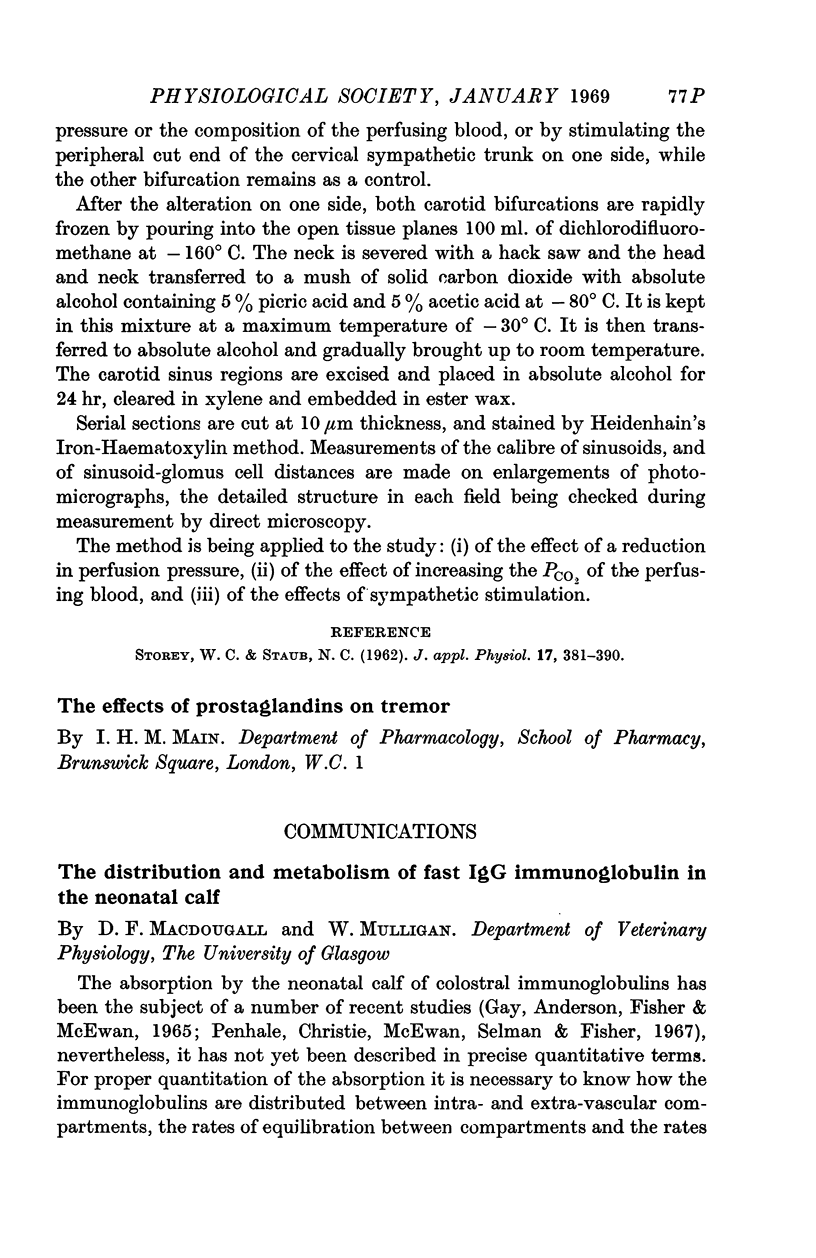


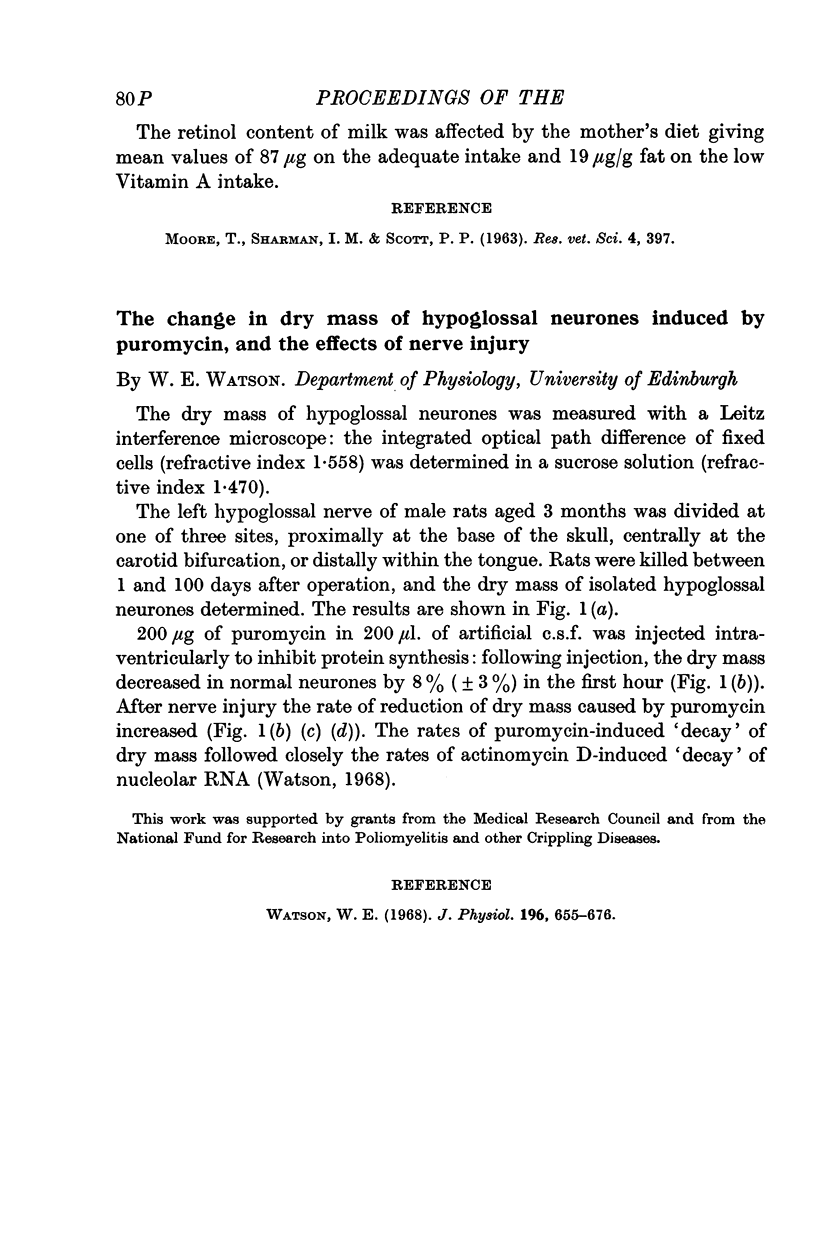

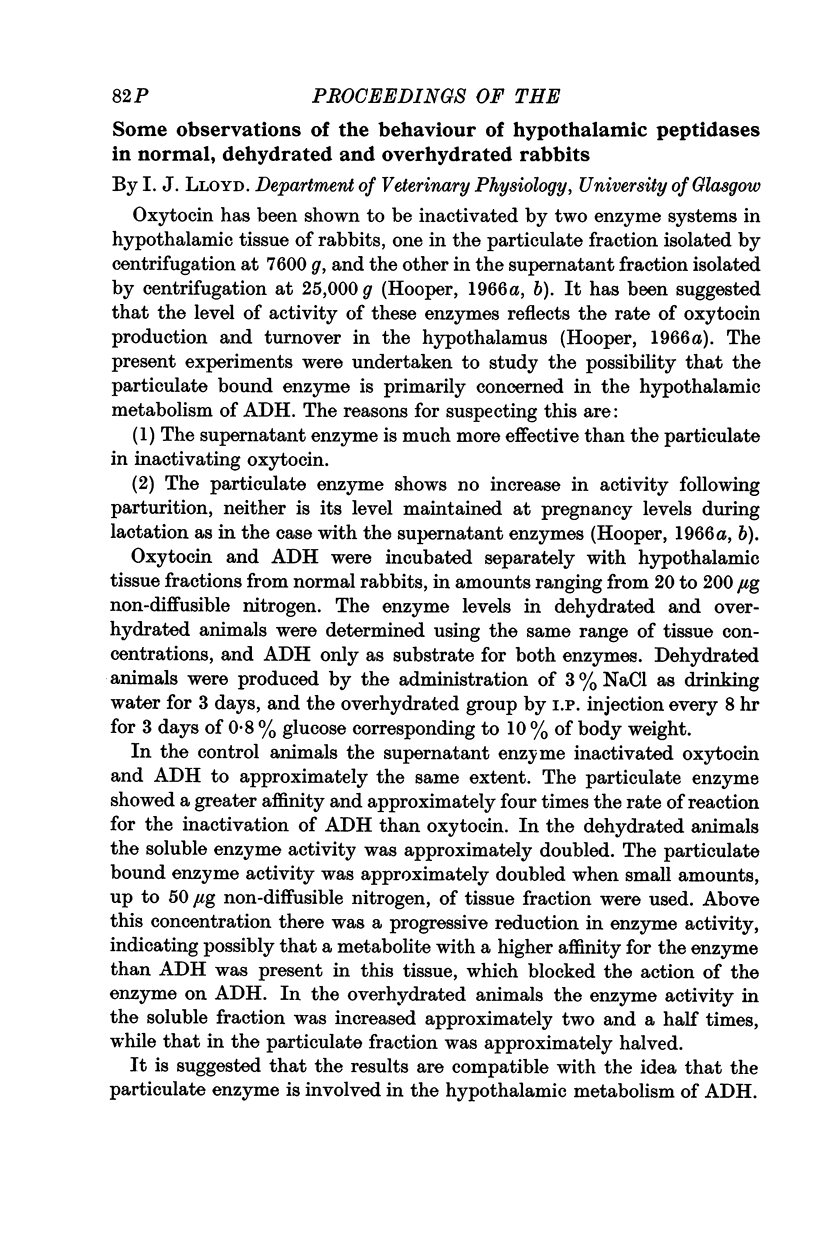

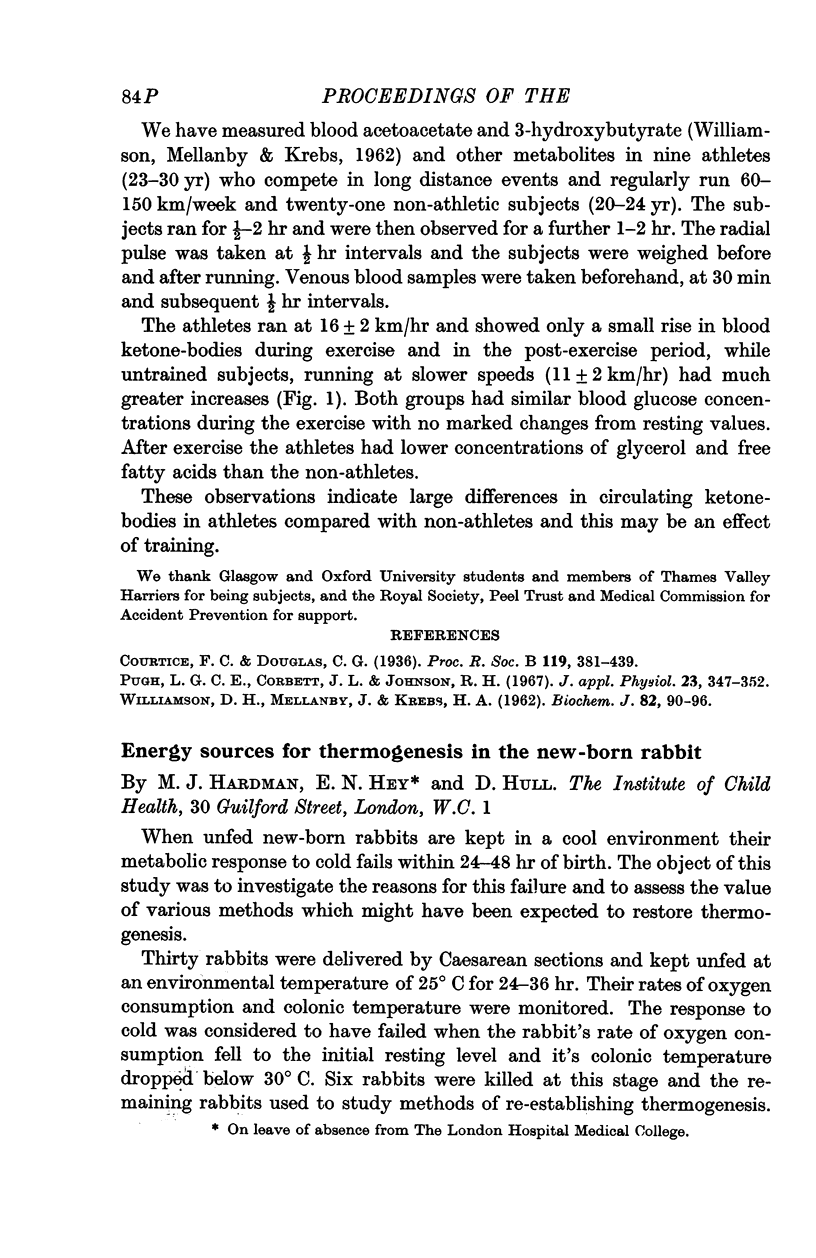

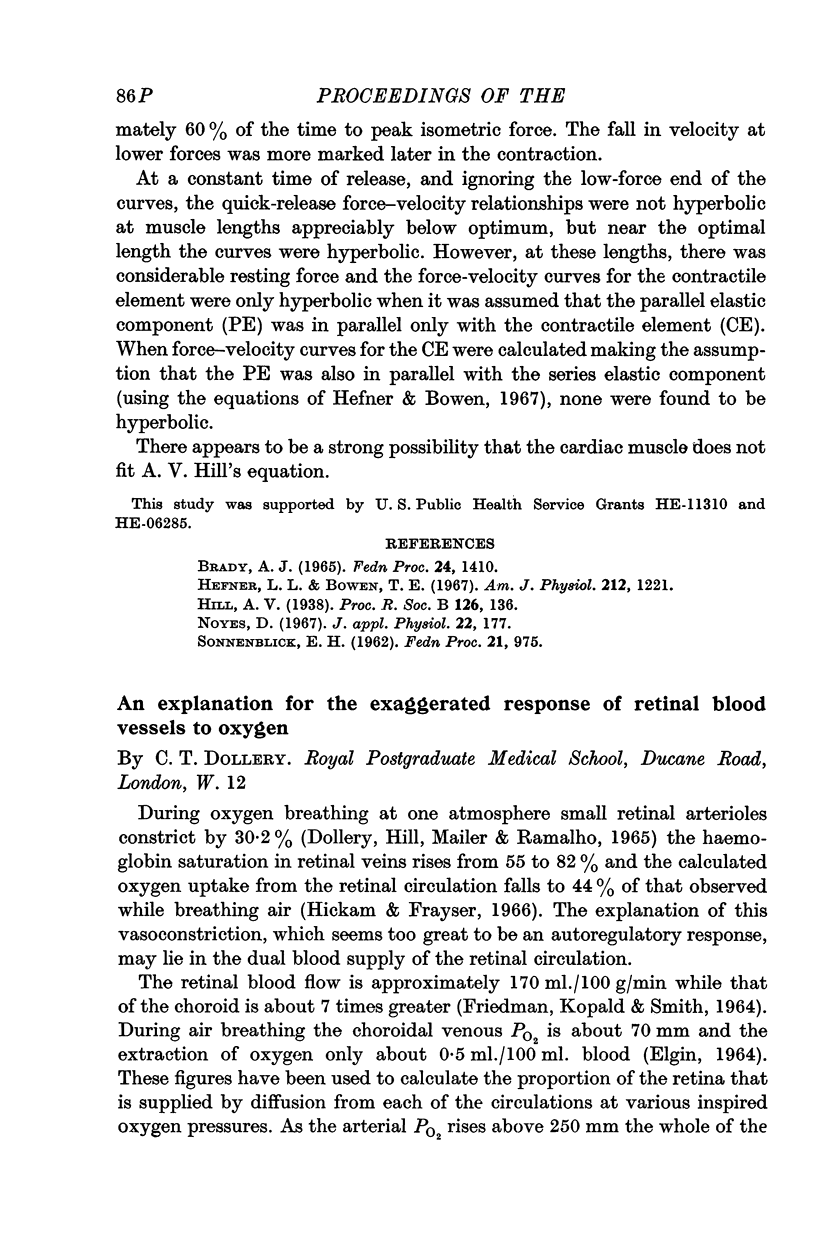




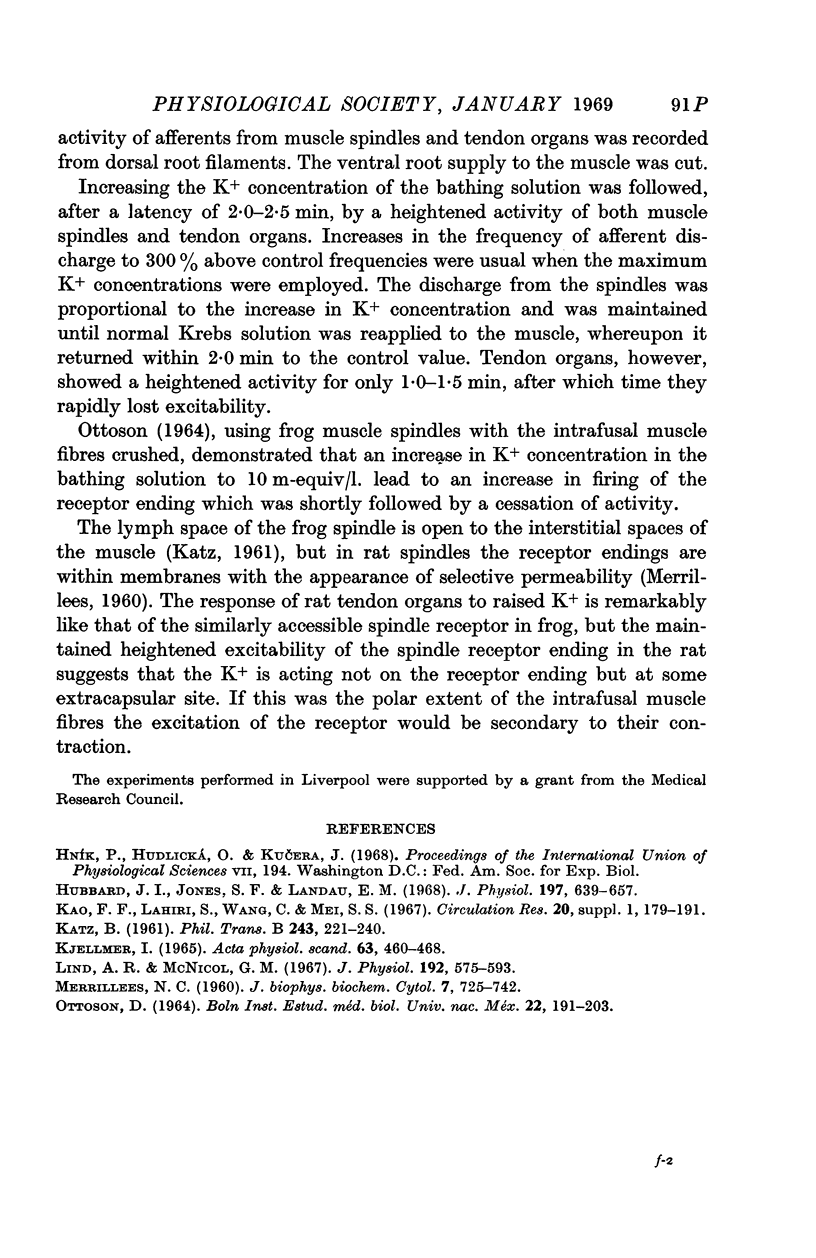




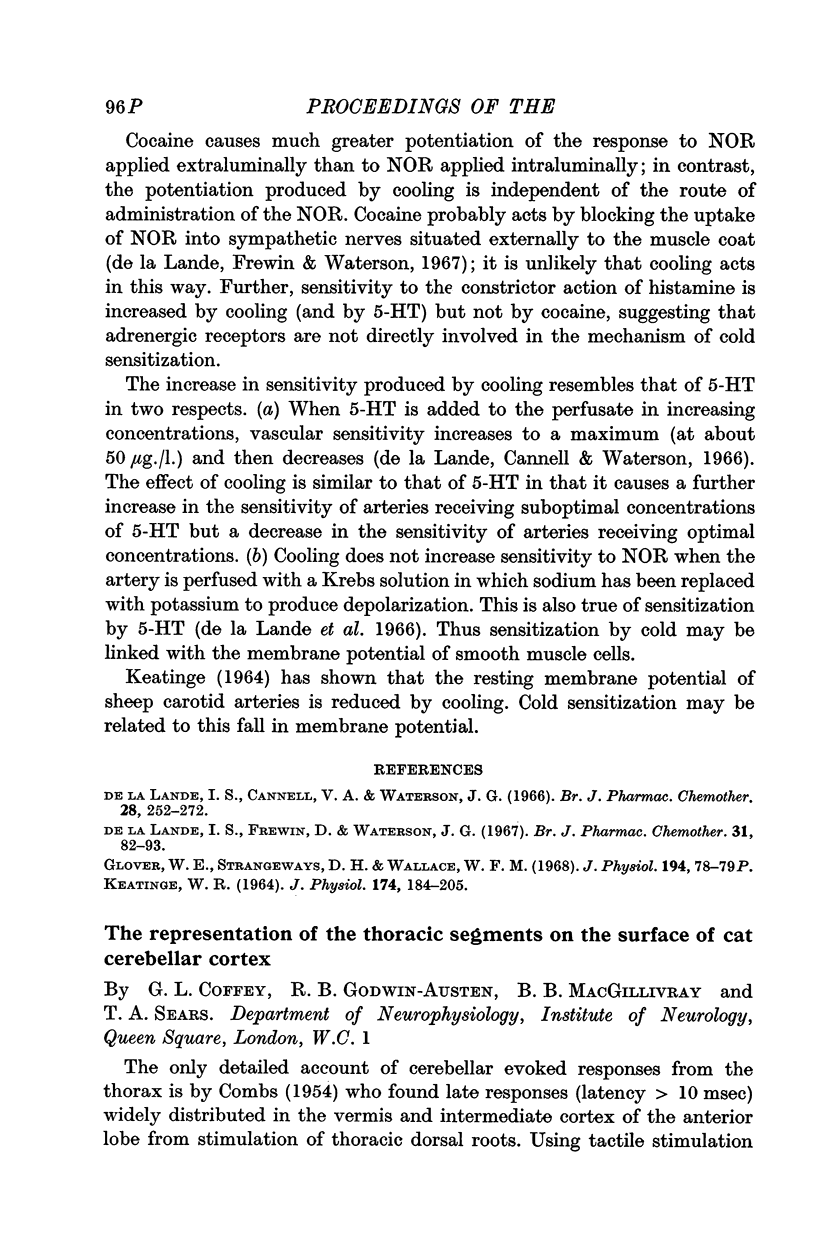
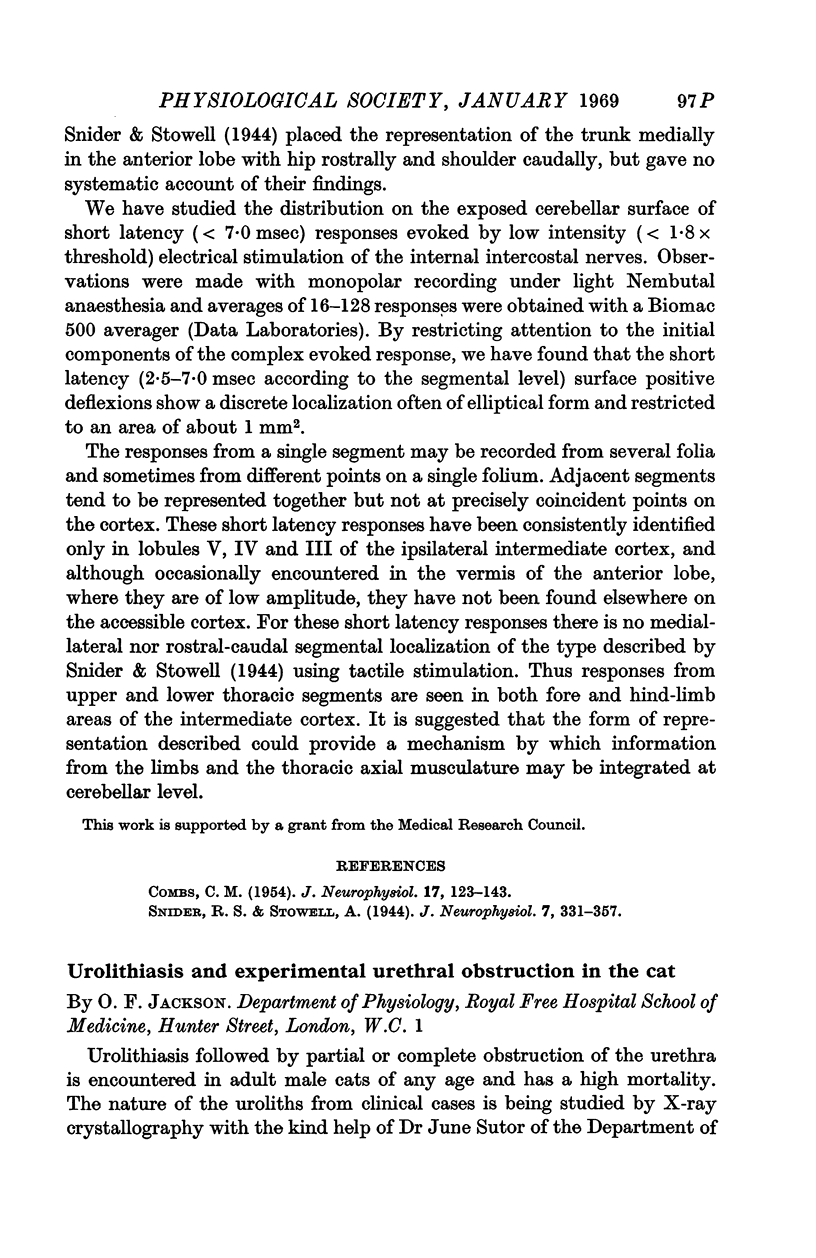
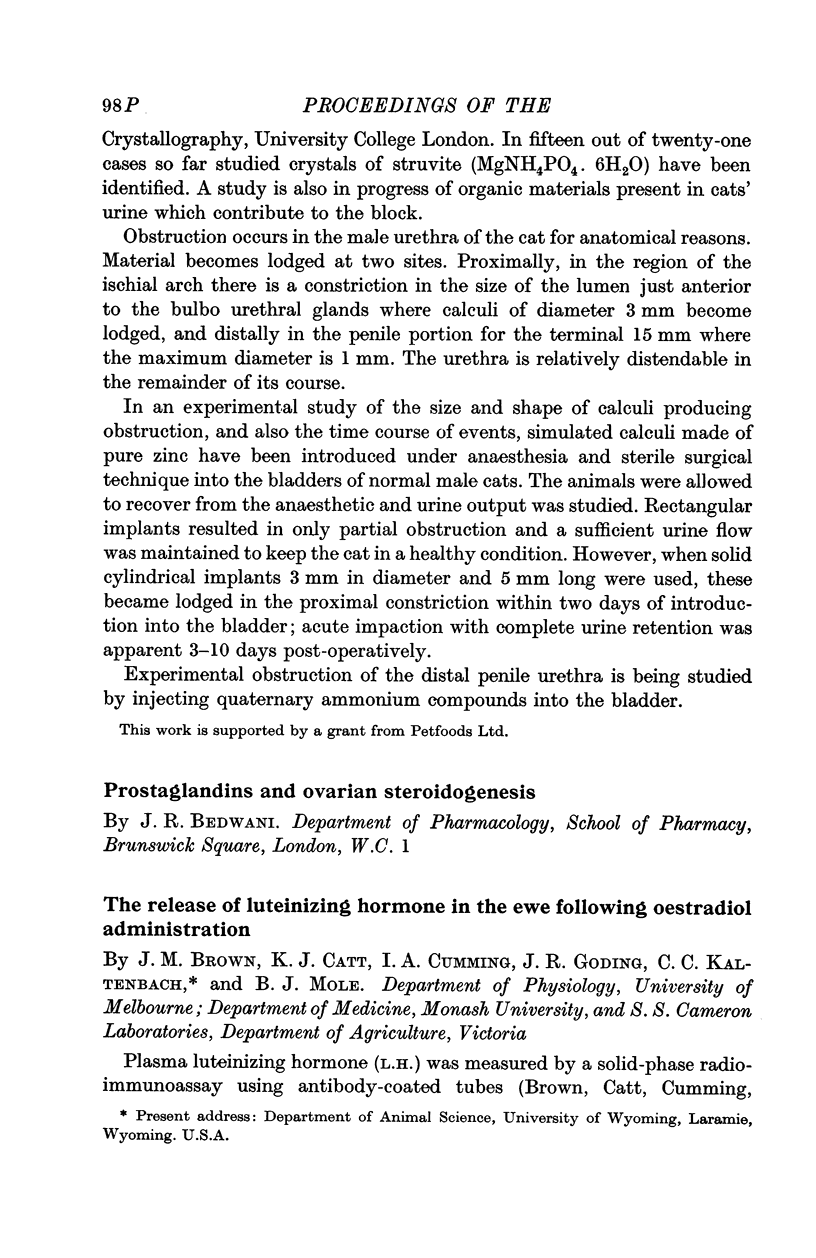



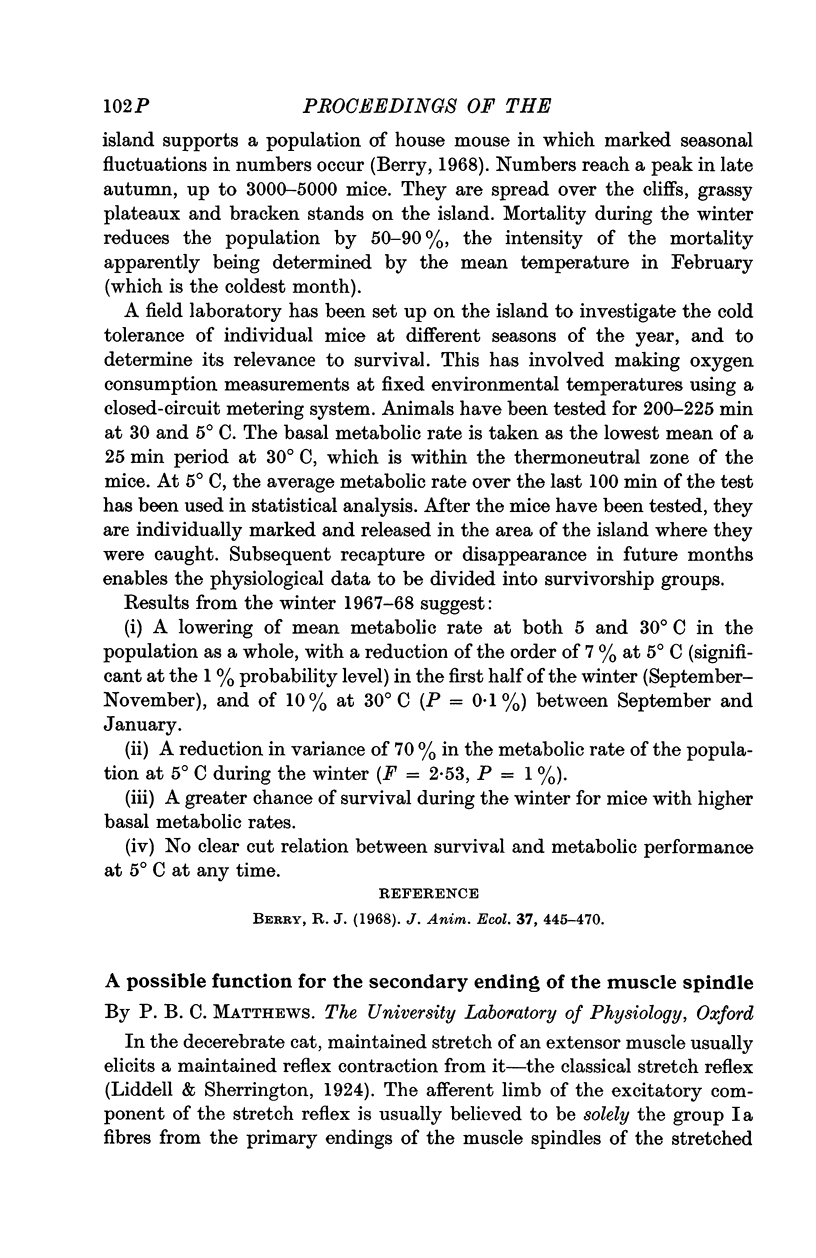




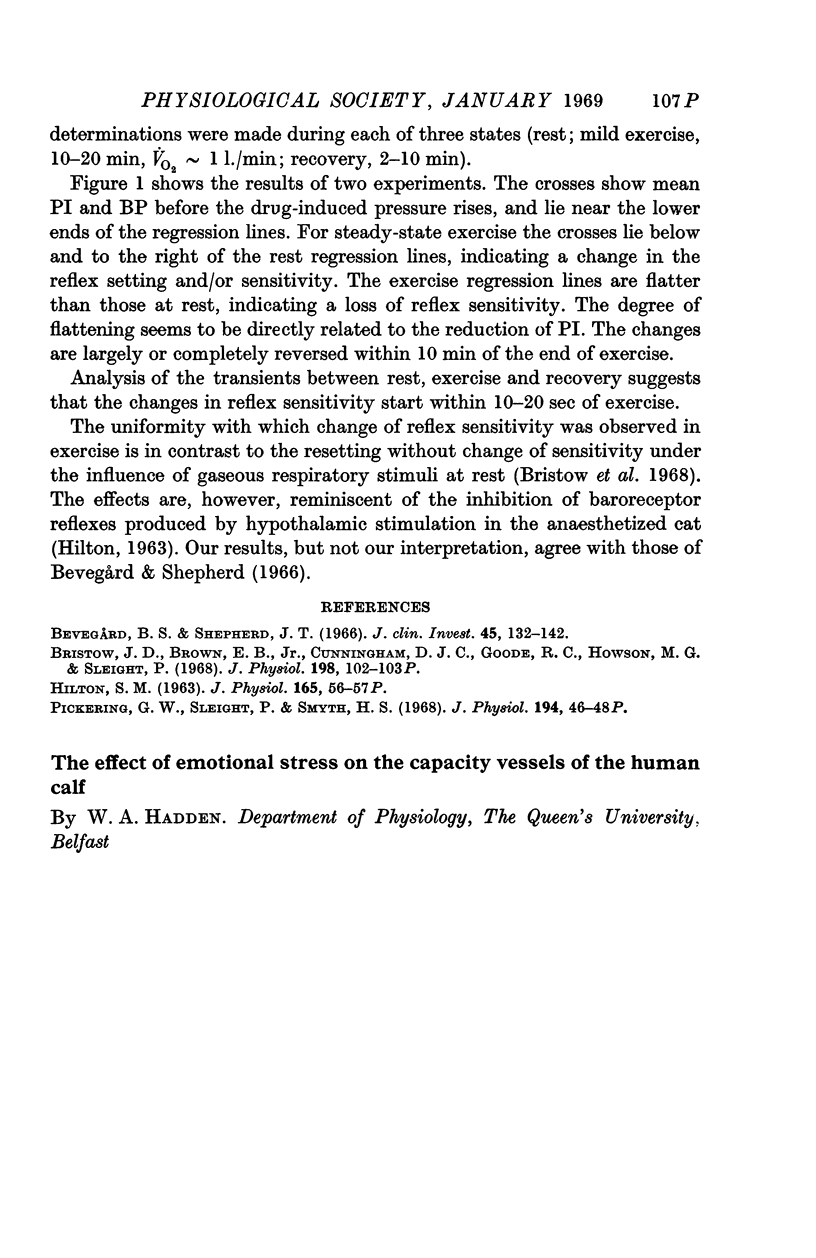
Selected References
These references are in PubMed. This may not be the complete list of references from this article.
- ABRAHAMS V. C., HILTON S. M., ZBROZYNA A. Active muscle vasodilatation produced by stimulation of the brain stem: its significance in the defence reaction. J Physiol. 1960 Dec;154:491–513. doi: 10.1113/jphysiol.1960.sp006593. [DOI] [PMC free article] [PubMed] [Google Scholar]
- ASMUSSEN E., JOHANSEN S. H., JORGENSEN M., NIELSEN M. ON THE NERVOUS FACTORS CONTROLLING RESPIRATION AND CIRCULATION DURING EXERCISE. EXPERIMENTS WITH CURARIZATION. Acta Physiol Scand. 1965 Mar;63:343–350. doi: 10.1111/j.1748-1716.1965.tb04073.x. [DOI] [PubMed] [Google Scholar]
- Bevegård B. S., Shepherd J. T. Circulatory effects of stimulating the carotid arterial stretch receptors in man at rest and during exercise. J Clin Invest. 1966 Jan;45(1):132–142. doi: 10.1172/JCI105317. [DOI] [PMC free article] [PubMed] [Google Scholar]
- Brady A. J. Time and displacement dependence of cardiac contractility: problems in defining the active state and force-velocity relations. Fed Proc. 1965 Nov-Dec;24(6):1410–1420. [PubMed] [Google Scholar]
- Brown M. C., Engberg I., Matthews P. B. The relative sensitivity to vibration of muscle receptors of the cat. J Physiol. 1967 Oct;192(3):773–800. doi: 10.1113/jphysiol.1967.sp008330. [DOI] [PMC free article] [PubMed] [Google Scholar]
- COMBS C. M. Electro-anatomical study of cerebellar localization; stimulation of various afferents. J Neurophysiol. 1954 Mar;17(2):123–143. doi: 10.1152/jn.1954.17.2.123. [DOI] [PubMed] [Google Scholar]
- CREESE R., NORTHOVER J. Maintenance of isolated diaphragm with normal sodium content. J Physiol. 1961 Feb;155:343–357. doi: 10.1113/jphysiol.1961.sp006632. [DOI] [PMC free article] [PubMed] [Google Scholar]
- Cotes J. E., Davies C. T., Healy M. J. Factors relating to maximum oxygen uptake in young adult male and female subjects. J Physiol. 1967 Apr;189(2):79P–80P. [PubMed] [Google Scholar]
- DAWES G. S., COMROE J. H., Jr Chemoreflexes from the heart and lungs. Physiol Rev. 1954 Apr;34(2):167–201. doi: 10.1152/physrev.1954.34.2.167. [DOI] [PubMed] [Google Scholar]
- DAWES G. S., MOTT J. C., WIDDICOMBE J. G. Chemoreceptor reflexes in the dog and the action of phenyl diguanide. Arch Int Pharmacodyn Ther. 1952;90(2-3):203–222. [PubMed] [Google Scholar]
- Davies C. T. Maximum oxygen uptake: prediction from cardiac frequency during submaximal exercise. J Physiol. 1967 Apr;189(2):77P–78P. [PubMed] [Google Scholar]
- De la Lande I. S., Frewin D., Waterson J. G. The influence of sympathetic innervation on vascular sensitivity to noradrenaline. Br J Pharmacol Chemother. 1967 Sep;31(1):82–93. doi: 10.1111/j.1476-5381.1967.tb01979.x. [DOI] [PMC free article] [PubMed] [Google Scholar]
- ELDRED E., GRANIT R., MERTON P. A. Supraspinal control of the muscle spindles and its significance. J Physiol. 1953 Dec 29;122(3):498–523. doi: 10.1113/jphysiol.1953.sp005017. [DOI] [PMC free article] [PubMed] [Google Scholar]
- ELGIN S. S. ARTERIOVENOUS OXYGEN DIFFERENCE ACROSS THE UVEAL TRACT OF THE DOG EYE. Invest Ophthalmol. 1964 Aug;3:417–426. [PubMed] [Google Scholar]
- FRIEDMAN E., KOPALD H. H., SMITH T. R. RETINAL AND CHOROIDAL BLOOD FLOW DETERMINED WITH KRYPTON-85 ANESTHETIZED ANIMALS. Invest Ophthalmol. 1964 Oct;3:539–547. [PubMed] [Google Scholar]
- GAY C. C., ANDERSON N., FISHER N., FISHER E. W., MCEWAN A. D. GAMMA GLOBULIN LEVELS AND NEONATAL MORTALITY IN MARKET CALVES. Vet Rec. 1965 Jan 30;77:148–149. [PubMed] [Google Scholar]
- GRANIT R. Neuromuscular interaction in postural tone of the cat's isometric soleus muscle. J Physiol. 1958 Oct 31;143(3):387–402. doi: 10.1113/jphysiol.1958.sp006067. [DOI] [PMC free article] [PubMed] [Google Scholar]
- Harris A. J., Miledi R. Prolonged survival of isolated frog muscle and its sensitivity to acetylcholine. Nature. 1966 Feb 12;209(5024):716–717. doi: 10.1038/209716a0. [DOI] [PubMed] [Google Scholar]
- Hefner L. L., Bowen T. E., Jr Elastic components of cat papillary muscle. Am J Physiol. 1967 May;212(5):1221–1227. doi: 10.1152/ajplegacy.1967.212.5.1221. [DOI] [PubMed] [Google Scholar]
- Hodgson H. J., Matthews P. B. The ineffectiveness of excitation of the primary endings of the muscle spindle by vibration as a respiratory stimulant in the decerebrate cat. J Physiol. 1968 Feb;194(2):555–563. doi: 10.1113/jphysiol.1968.sp008424. [DOI] [PMC free article] [PubMed] [Google Scholar]
- Hooper K. C. Some observations on the behaviour of hypothalamic enzymes during the time of blastocyst implantation in the rabbit. Biochem J. 1966 Apr;99(1):128–132. doi: 10.1042/bj0990128. [DOI] [PMC free article] [PubMed] [Google Scholar]
- Hooper K. C. The metabolism of oxytocin during lactation in the rabbit. Biochem J. 1966 Sep;100(3):823–826. doi: 10.1042/bj1000823. [DOI] [PMC free article] [PubMed] [Google Scholar]
- Hubbard J. I., Jones S. F., Landau E. M. An examination of the effects of osmotic pressure changes upon transmitter release from mammalian motor nerve terminals. J Physiol. 1968 Aug;197(3):639–657. doi: 10.1113/jphysiol.1968.sp008579. [DOI] [PMC free article] [PubMed] [Google Scholar]
- KEATINGE W. R. MECHANISM OF ADRENERGIC STIMULATION OF MAMMALIAN ARTERIES AND ITS FAILURE AT LOW TEMPERATURES. J Physiol. 1964 Nov;174:184–205. doi: 10.1113/jphysiol.1964.sp007481. [DOI] [PMC free article] [PubMed] [Google Scholar]
- KJELLMER I. THE POTASSIUM ION AS A VASODILATOR DURING MUSCULAR EXERCISE. Acta Physiol Scand. 1965 Apr;63:460–468. doi: 10.1111/j.1748-1716.1965.tb04089.x. [DOI] [PubMed] [Google Scholar]
- KJELLMER I. THE POTASSIUM ION AS A VASODILATOR DURING MUSCULAR EXERCISE. Acta Physiol Scand. 1965 Apr;63:460–468. doi: 10.1111/j.1748-1716.1965.tb04089.x. [DOI] [PubMed] [Google Scholar]
- Lind A. R., McNicol G. W. Local and central circulatory responses to sustained contractions and the effect of free or restricted arterial inflow on post-exercise hyperaemia. J Physiol. 1967 Oct;192(3):575–593. doi: 10.1113/jphysiol.1967.sp008318. [DOI] [PMC free article] [PubMed] [Google Scholar]
- MERRILLEES N. C. The fine structure of muscle spindles in the lumbrical muscles of the rat. J Biophys Biochem Cytol. 1960 Jul;7:725–742. doi: 10.1083/jcb.7.4.725. [DOI] [PMC free article] [PubMed] [Google Scholar]
- MILEDI R., TROWELL O. A. Acetylcholine sensitivity of rat diaphragm maintained in organ culture. Nature. 1962 Jun 9;194:981–982. doi: 10.1038/194981a0. [DOI] [PubMed] [Google Scholar]
- Matthews B. H. Nerve endings in mammalian muscle. J Physiol. 1933 Apr 13;78(1):1–53. doi: 10.1113/jphysiol.1933.sp002984. [DOI] [PMC free article] [PubMed] [Google Scholar]
- Matthews P. B. The reflex excitation of the soleus muscle of the decerebrate cat caused by vibbration applied to its tendon. J Physiol. 1966 May;184(2):450–472. doi: 10.1113/jphysiol.1966.sp007926. [DOI] [PMC free article] [PubMed] [Google Scholar]
- Mills J. N. Human circadian rhythms. Physiol Rev. 1966 Jan;46(1):128–171. doi: 10.1152/physrev.1966.46.1.128. [DOI] [PubMed] [Google Scholar]
- Noyes D. H. Muscle balance with electrical-to-mechanical loading transducer. J Appl Physiol. 1967 Jan;22(1):177–179. doi: 10.1152/jappl.1967.22.1.177. [DOI] [PubMed] [Google Scholar]
- OTTOSON D. IONIC EFFECTS ON THE ISOLATED MUSCLE SPINDLE. Bol Inst Estud Med Biol Univ Nac Auton Mex. 1964 Aug;22:191–203. [PubMed] [Google Scholar]
- PIERCE A. E., FEINSTEIN A. BIOPHYSICAL AND IMMUNOLOGICAL STUDIES ON BOVINE IMMUNE GLOBULINS WITH EVIDENCE FOR SELECTIVE TRANSPORT WITHIN THE MAMMARY GLAND FROM MATERNAL PLASMA TO COLOSTRUM. Immunology. 1965 Jan;8:106–123. [PMC free article] [PubMed] [Google Scholar]
- Perkel D. H., Gerstein G. L., Moore G. P. Neuronal spike trains and stochastic point processes. I. The single spike train. Biophys J. 1967 Jul;7(4):391–418. doi: 10.1016/S0006-3495(67)86596-2. [DOI] [PMC free article] [PubMed] [Google Scholar]
- Perkel D. H., Gerstein G. L., Moore G. P. Neuronal spike trains and stochastic point processes. II. Simultaneous spike trains. Biophys J. 1967 Jul;7(4):419–440. doi: 10.1016/S0006-3495(67)86597-4. [DOI] [PMC free article] [PubMed] [Google Scholar]
- Pickering G. W., Sleight P., Smyth H. S. The reflex regulation of arterial pressure during sleep in man. J Physiol. 1968 Jan;194(1):46P–48P. [PubMed] [Google Scholar]
- Pugh L. G., Corbett J. L., Johnson R. H. Rectal temperatures, weight losses, and sweat rates in marathon running. J Appl Physiol. 1967 Sep;23(3):347–352. doi: 10.1152/jappl.1967.23.3.347. [DOI] [PubMed] [Google Scholar]
- SONNENBLICK E. H. Implications of muscle mechanics in the heart. Fed Proc. 1962 Nov-Dec;21:975–990. [PubMed] [Google Scholar]
- STERLING K. The turnover rate of serum albumin in man as measured by I131-tagged albumin. J Clin Invest. 1951 Nov;30(11):1228–1237. doi: 10.1172/JCI102542. [DOI] [PMC free article] [PubMed] [Google Scholar]
- WILLIAMSON D. H., MELLANBY J., KREBS H. A. Enzymic determination of D(-)-beta-hydroxybutyric acid and acetoacetic acid in blood. Biochem J. 1962 Jan;82:90–96. doi: 10.1042/bj0820090. [DOI] [PMC free article] [PubMed] [Google Scholar]
- Watson W. E. Observations on the nucleolar and total cell body nucleic acid of injured nerve cells. J Physiol. 1968 Jun;196(3):655–676. doi: 10.1113/jphysiol.1968.sp008528. [DOI] [PMC free article] [PubMed] [Google Scholar]
- Wildenthal K., Mierzwiak D. S., Skinner N. S., Jr, Mitchell J. H. Potassium-induced cardiovascular and ventilatory reflexes from the dog hindlimb. Am J Physiol. 1968 Sep;215(3):542–548. doi: 10.1152/ajplegacy.1968.215.3.542. [DOI] [PubMed] [Google Scholar]


